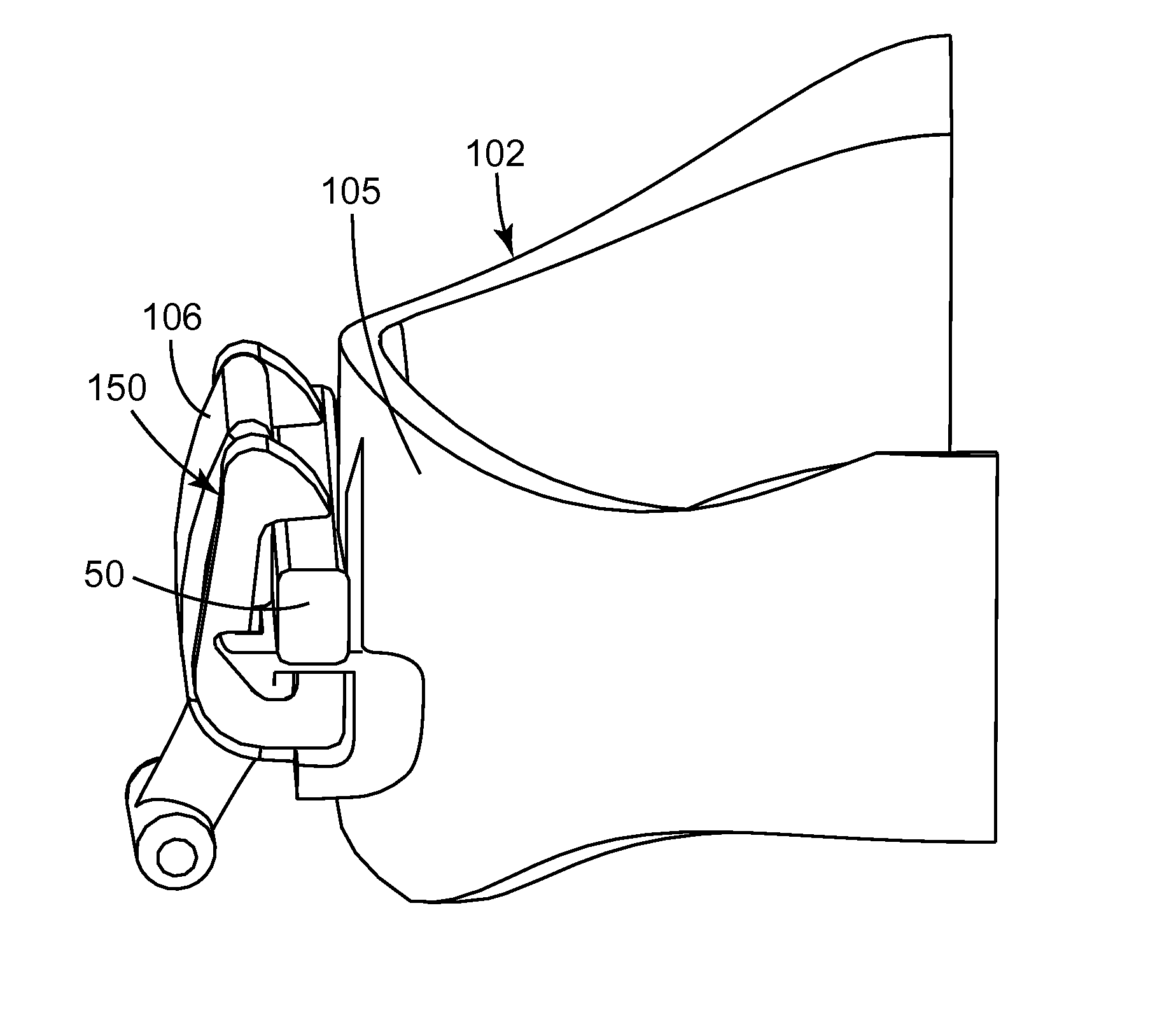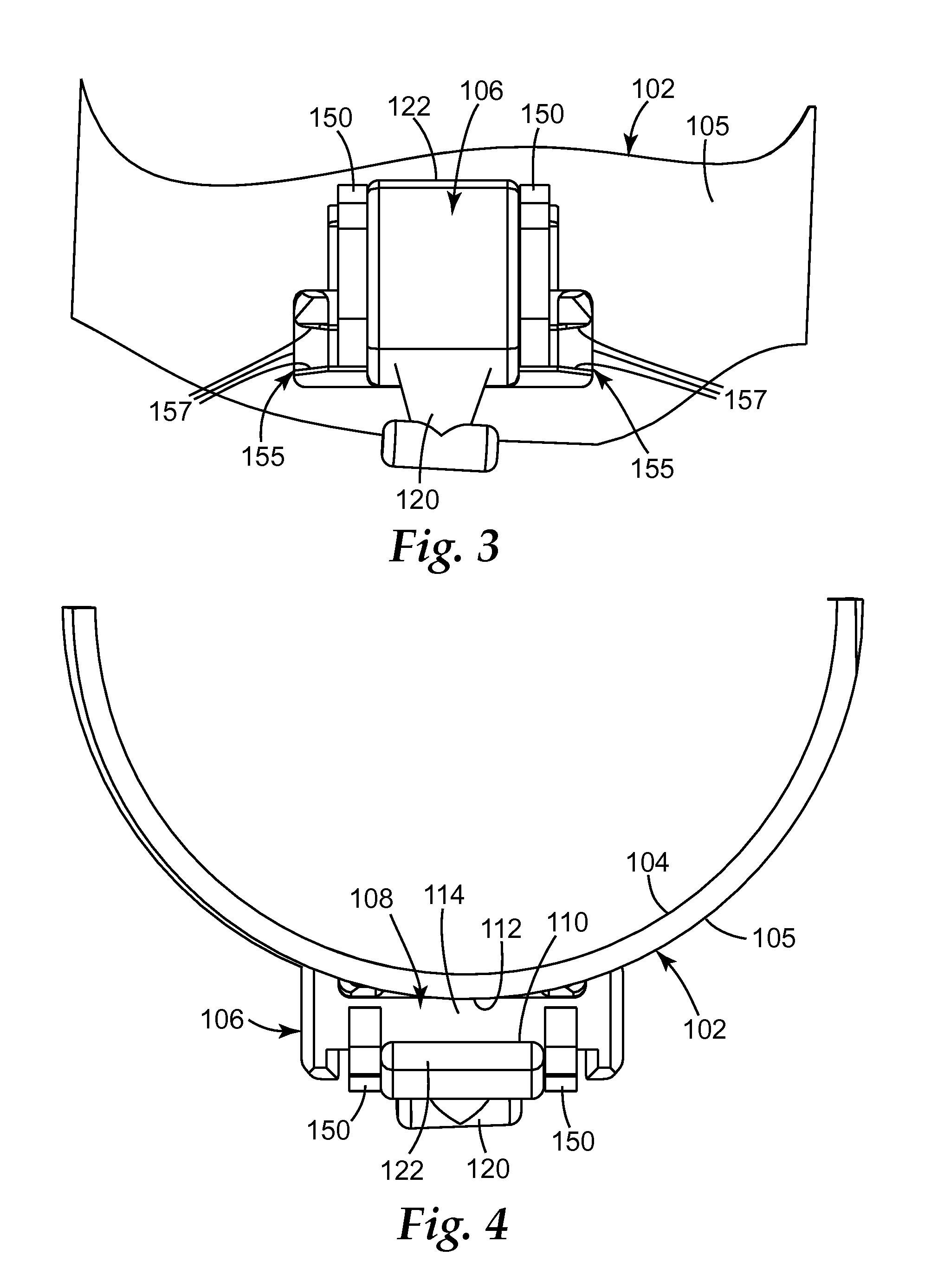Orthodontic appliance with low profile clip
a low-profile, appliance technology, applied in the field of orthodontic treatment, can solve the problems of distributing strain on the clip, limiting the space of the appliance on the lingual, and hygienic effect of low-profile appliances
- Summary
- Abstract
- Description
- Claims
- Application Information
AI Technical Summary
Benefits of technology
Problems solved by technology
Method used
Image
Examples
Embodiment Construction
[0051]Described herein are self-ligating orthodontic appliances adaptable for attachment to the teeth of a patient and capable of receiving an archwire to impart corrective forces to the teeth. These appliances are preferably a part of a system of appliances that are bonded to some or all of the central, lateral, cuspid, bicuspid, and molar teeth of a dental arch and collectively cooperate with a suitable archwire to guide the teeth to proper locations. This system of appliances is also contemplated for use on both upper and lower arches. It is also to be understood that the system of appliances may be adapted for attachment to either the lingual or labial surfaces of teeth.
[0052]These appliances can have particular configurations that vary substantially from tooth to tooth, based for example on differences in the shapes of the respective teeth. The configuration of these appliances may also vary substantially from one patient to another. For example, these appliances can be customi...
PUM
 Login to View More
Login to View More Abstract
Description
Claims
Application Information
 Login to View More
Login to View More - R&D
- Intellectual Property
- Life Sciences
- Materials
- Tech Scout
- Unparalleled Data Quality
- Higher Quality Content
- 60% Fewer Hallucinations
Browse by: Latest US Patents, China's latest patents, Technical Efficacy Thesaurus, Application Domain, Technology Topic, Popular Technical Reports.
© 2025 PatSnap. All rights reserved.Legal|Privacy policy|Modern Slavery Act Transparency Statement|Sitemap|About US| Contact US: help@patsnap.com



